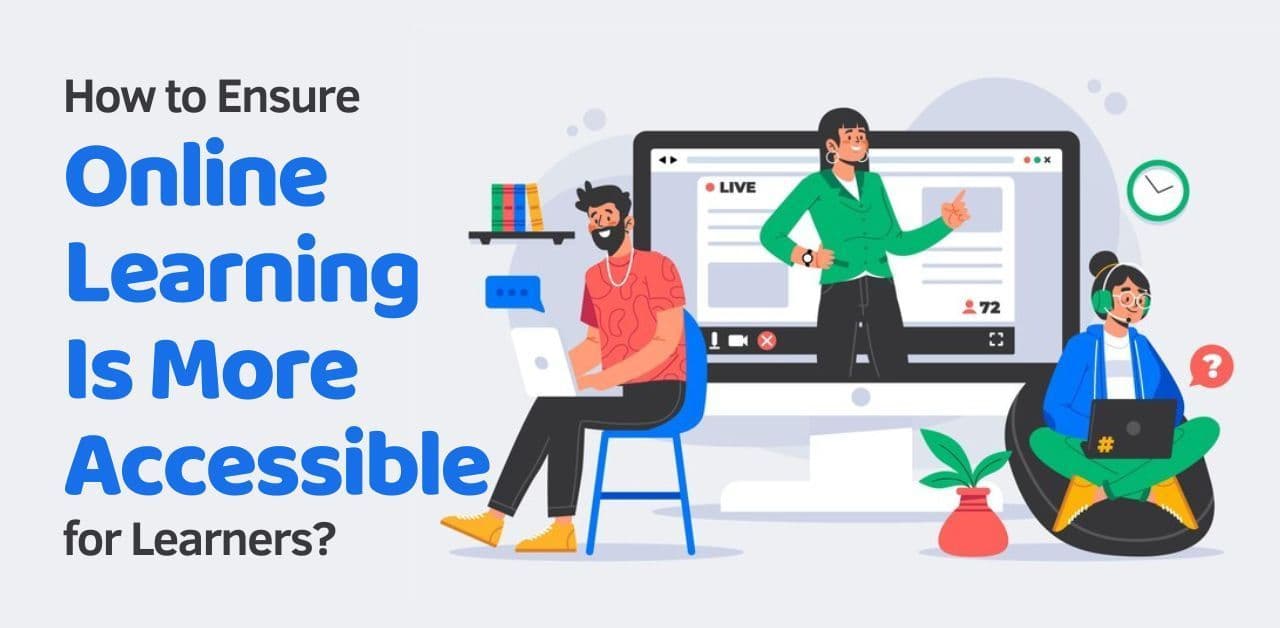
How to Ensure Online Learning Is More Accessible for Learners?
Cutting-edge technology plays an instrumental in fostering online learning and facilitating everyone, even in the remotest corners of the world, to acquire knowledge. The presence of reliable, feature-packed e-learning platforms is a boon to learners with one or the other physical disability. The prime responsibility of leading online course providers should be to improve accessibility of e-learning.
Learners with issues pertinent to mobility, hearing, visual or cognitive find the process of online learning immensely helpful and flexible. They can learn and enrich their knowledge from anywhere and anytime. Reliable e-learning platforms allow learners with disabilities to use any device they have and learn new things at their own pace. Conventional learning doesn't ensure this sort of freedom.
What Does Accessible eLearning Course Mean?
Accessible e-learning or online education is a type of learning that takes several things into account. It obliges the requirements of individuals with learning, physical, or cognitive inabilities, such as sight or hearing impedance, dyslexia, and attention deficit issues.
Every learner can attend classes remotely, comprehend the content of the course, and adhere to the course syllabus better when providers boost accessibility in online course. It is essential to develop and structure the course materials, keeping all learners in mind.
Here are the typical disability categories under which most learners fall.
Hearing: Partial or complete loss of the ability to hear
Sight: Aside from total blindness, many learners suffer from color blindness or reduced vision
Motor Skills: Limited motor skills owing to a permanent or temporarily physically disabled condition
Cognitive: Typical neurological problems, including ADHD and ADD, prevent learners from focusing and learning
Why is Improving eLearning Accessibility Essential?
Those who conduct online learning courses, especially for learners with disabilities, must improve accessibility of e-learning platforms. Here's why it's paramount.
Many Individuals Suffer from Physical or Learning Disabilities:
About 4-5% of adults in the United States have ADHD. The specific number of different sorts of physical or learning disabilities is difficult to measure. This implies that learning disorders and physical inabilities are pretty common. Therefore, making e-learning more accessible facilitates these individuals to a great extent.
Every Learner Gets the Same Opportunities:
Making e-learning accessible is not limited to user experience and ease of use. Perhaps most importantly, prioritizing improving platform accessibility and providing more accessible virtual learning courses are selfless acts to do.
Every learner deserves equal opportunities, as everyone has the right to education, irrespective of their abilities. So, improving accessibility in elearning matters the most.
What are the Best Ways to Make eLearning Courses More Accessible?
Learners with physical disabilities or learning difficulties can enjoy a fascinating, engaging, and helpful learning experience if online course provider prioritizes accessibility.
Comply with Online Learning Accessibility Guidelines:
It is of the utmost importance for online course content creators to have profound knowledge of virtual content accessibility standards and guidelines. Paying importance to these stringent regulations from the very first step can help create more accessible online courses for learners with disabilities.
Refrain from Using Lengthy Paragraphs:
Learners with dyslexia or attention deficit problems don't find long text blocks engaging and interesting as comprehending becomes challenging for them. So, it is crucial to avoid lengthy paragraphs when creating course content. Individuals with learning disorders cannot focus and find such text difficult to read.
Create an Inclusive eLearning Environment:
Online learning is more accessible when course providers emphasize creating an inclusive e-learning environment. Refrain from describing colors at the time of referring to visual content or buttons for navigation.
Phrasing words in a way that takes learners' comprehension ability into account is imperative. An online course provider can make learners feel more valued and special by choosing an inclusive language.
Use Voice-Over and Alt Text for Visual Content:
Be it an image, video, or any other visual content type, adding alternative text, besides captions, must be a priority. Moreover, adding audio or voice-over for a proper description of virtual course content can benefit learners with vision problems to a significant extent. The best thing an online course provider can do is try to keep improving accessibility in elearning.
Stay Away from Using High Contrast:
Individuals who are partially blind or have several other vision problems find it difficult if an e-learning site has excessively high contrast. Moderate contrast is what allows them to identify each letter and understand online course content easily.
Create Various Kinds of Content:
Developing an assortment of content is generally a decent practice in virtual learning classes as it keeps things really fascinating and fulfils different styles of learning. It's considerably more significant while making an accessible online learning course as it guarantees that there's content everybody can access and process. A course provider's user base will grow quickly if it chooses to improve accessibility.
Besides every crucial step mentioned above, measuring accessibility prior to the deployment of virtual courses for learners with learning or physical impairment is necessary. Moreover, an e-learning course provider must ensure that it doesn't do anything that violates the WCAG standards.
Appreciate the creator